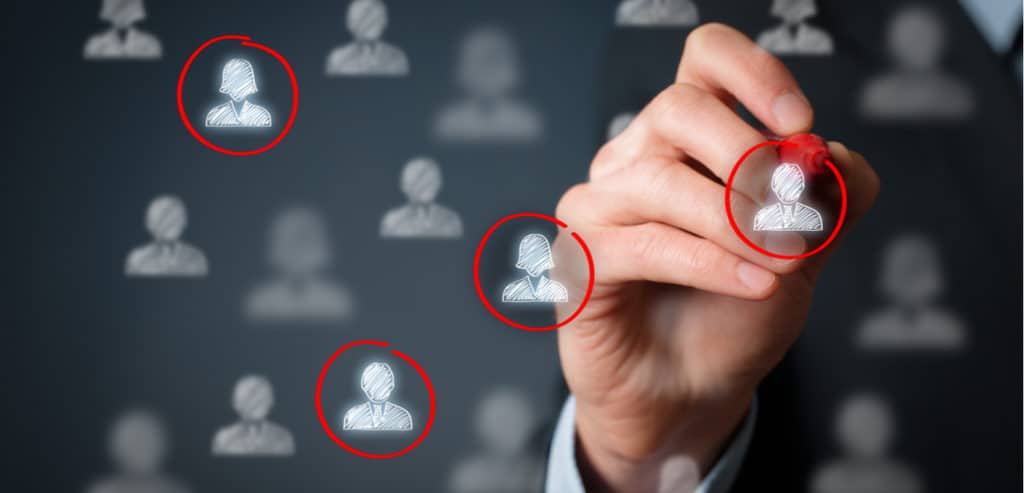
Roscoe Rush
B2B manufacturers manage the creation, sale and distribution of a wide array of products. This is no easy task, and the job only gets more difficult if they are still working from a printed catalog. Yes, this method has worked historically, but that doesn’t mean there aren’t better methods to handle this part of the process.
When moving from a printed catalog to an e-commerce platform, it is important to consider different audience segments and how they will use a B2B site.
Audience Segments
B2B e-commerce is more than just order transactions. A B2B site needs to engage multiple audiences with a voice and content that speaks to their different goals. Speaking to all of these audiences with the same experience is the key to a successful site. And while each audience segment may have different goals, a B2B site should be able to cater to each audience segment’s needs to drive the results desired from an e-commerce platform.
So, who are the different audience segments? There are many ways to define audiences, some of the most popular are; industry verticals, professional roles, age and geography, but the list goes on. While these important criteria are generally given a lot of attention when defining audience segments, they are really a third-tier audience segment for a B2B e-commerce site.
For B2B commerce, we typically define audience segments based on the following tiers:
- Revenue
- Company size
- Distinguishing criteria (e.g., the industry vertical, the professional roles within the industry, other important aspects that are unique to B2B)
Now let’s take a deeper dive into the first two audience segments and how they can help make the decision to move from print catalog to e-commerce platform.
1. Revenue
This segment matters the most. For a typical B2B company, revenue likely falls into the 80/20 rule. That is 80% of revenue comes from 20% of a company’s primary customers. Conversely, 80% of customers, or secondary customers, only generate 20% of a company’s revenue.
Primary Customers
Primary customers are the main source of revenue, and they should be treated as such. This audience always needs to be kept happy, and sales and support staff should focus on them. Customer service is often a competitive distinction for this group, and offering them a flexible e-commerce experience is a great way to keep their business.
An important distinction to make here is that each touch a business receives equates to revenue earned in the long run. At the same time, e-commerce won’t be fully replacing these sales or support touches, but instead complement them in the most efficient way possible. Everyone likes efficient revenue gains, right?
Secondary Customers
While primary customers are technically the most important from the 80/20 rule, don’t neglect other customer sets. This is a common issue that businesses face, and it is a large reason why so many B2B manufacturers are still selling through print catalogs. Secondary customers are still representing a large chunk of revenue for any business, and so there needs to be enough support for their interests as well.
This is where going from print catalog to e-commerce platform can really help a B2B business from a technical aspect. E-commerce platforms are often able to utilize powerful market segmentation tools, which allow promotion of different types of content and products to different market segments based on their own needs. Additionally, for each secondary customer that engages in buying on an e-commerce platform, this frees up sales and support staff to handle primary customer touches.
With each segment getting the content and offers they need, their buying experience will be easier and more straightforward than ever. With this new flexibility in buying, why would they ever turn somewhere else? Remember that establishing re-ordering/auto-ordering relationships with buyers is the name of the game, and this applies to secondary customers too. Often, this focused experience may even cause them to transition into primary customers as well.
New Customers
Last on the list is new customers. These potential sources of revenue are customers that are going to be great for every business, but they just haven’t showed up yet. Providing the same benefits to primary and secondary buyers as discussed above will really boost a company’s reputation. In turn, this will bring in new customers, and they can start taking advantage of the same great e-commerce benefits as well.
New customers can come organically, or through recommendations of primary or secondary customers. This is why it is so important not to leave secondaries hanging. Secondary customers evaluate a vendor’s maturity and stability based on its customer service. The customer doesn’t want to feel out on a limb when doing business. Instead, they are looking for a clear, effective customer support path. If a company can provide this with an impressive online buying experience, then it is almost a guarantee they’ll be recommended to new customers.
Today’s sales funnel is different from the past. Potential customers are further down the sales process before the first contact is even made. They know who and what a company is, and have researched products, services and the business thoroughly. A good B2B e-commerce experience needs to be able to repeatedly provide content that has value to the customer, new or old, existent or not.
2.Company Size
In B2B commerce, different size customers have different needs or expectations. Online commerce is equal parts sales, customer support and content, providing the right experience to the following types of companies:
Enterprises
For enterprises, the typical purchaser exists in the form of a purchasing manager. These individuals primarily want to place orders online. Companies of this size expect a more B2C-like e-commerce experience. This means online shopping carts, credit card payment and comprehensive order tracking. Since the buyer will typically be a purchasing manager, it is important to include the ability to pay on account. Also note that enterprises can be in either primary or secondary customer segments.
Mid-market companies
Mid-market company sizes are typically going to be a part of a company’s primary customer segment. Like enterprise purchasing managers, mid-market buyers are going to be looking for order tracking. This might not be as intuitive since buyers will often place orders through other channels such as by phone, fax, email or electronic data interchange (EDI).
Going back to what was said before, it is particularly important to provide an online experience that complements sales and support staff when dealing with mid-market companies. Again, this experience is difficult to provide if a company is simply managing sales through a print catalog. Where’s the personality in that?
Small/Medium Businesses
Small to medium businesses are going to appear in secondary customer segments. For these businesses, the need to be able to accommodate small order amounts or infrequent orders is key. Like enterprises, these buyers will expect a more B2C e-commerce experience equipped with shopping carts, credit card payments, order tracking and other self-service options.
However, the big difference this segment expects is service that is available 24/7. This is because for SMBs, orders are typically placed outside normal business hours. It is vital to funnel their customers online to lower the costs associated with each per transaction. Of course, an e-commerce site and platform are the best way to accomplish this, unless a company wants to have 24/7 sales support, that is.
3.Distinguishing Criteria
When building a new digital commerce experience there may be additional distinguishing criteria that require special attention. This criterion may be more specific to a single business or product line, but it could also extend to an entire industry.
Some distinguishing criteria to consider:
- Jargon – In the B2B industry, products, parts, components, etc., are often referred to by their technical names or descriptions rather than by the more straightforward terms (as seen more often in B2C commerce). Best advice? Embrace the jargon. Simply put, B2B buyers will be more knowledgeable about the products or services they’re seeking. Using industry-specific terminology will likely put a B2B buyer at ease, since they’ll be more familiar with this language.
- Multiple Decision Makers – In traditional B2C commerce, there is usually a single person making the purchasing decision. With B2B purchases, such as large-scale machinery or volume-based products, there may be several individuals weighing in on the decision. Technical experts, product owners, executives, and others can be involved. Casting a wide net – while also tailoring specific content for different organizational leaders – is a great marketing tactic for reaching the right audience.
- Product vs. Brand Focus – Having brand loyalty is common in B2C, but a B2B buyer is more concerned with the technical details – best pricing, product quality, etc. – than with who has the best marketing over time. Consider focusing on the more tangible attributes of your product or service. Leverage product reviews and ratings, organize site content into fewer places, and base your marketing materials on specific product benefits. This should aim to decrease the overall time a B2B buyer needs to fully evaluate your product or service.
E-commerce for B2B, a simple and efficient way to impress
E-commerce makes it easy for these different roles to organize and interact with one other throughout the buying process, which will create new and powerful efficiencies within a B2B company. With everything regarding the B2B purchase process easily accessible in one place, errors are minimized, the benefits of organization are maximized, and these businesses will be able to feel these changes directly when it comes to the bottom line.
Roscoe Rush is head of Episerver Solutions at Luminos Labs, a web design and development agency. He has worked for more than 25 years in e-commerce, covering solution consulting and architecture, market strategy, solution implementation and thought leadership.
Favorite